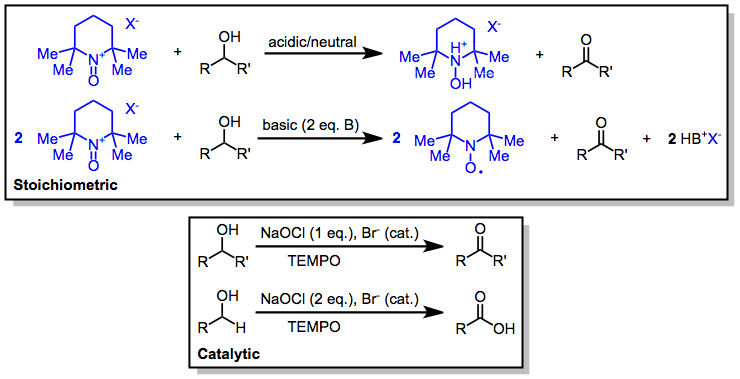Oxoammonium-catalyzed oxidation reactions involve the conversion of organic substrates to more highly oxidized materials through the action of an N-oxoammonium species. Nitroxides may also be used in catalytic amounts in the presence of a stoichiometric amount of a terminal oxidant.[1] Nitroxide radical species used are either 2,2,6,6-tetramethylpiperidine-1-oxyl (TEMPO) or derivatives thereof.
(1)

- ^ Bobbitt, J. M.; Bruckner, C.; Merbouh, N. Org. React. 2009, 74, 103. doi:10.1002/0471264180.or074.02